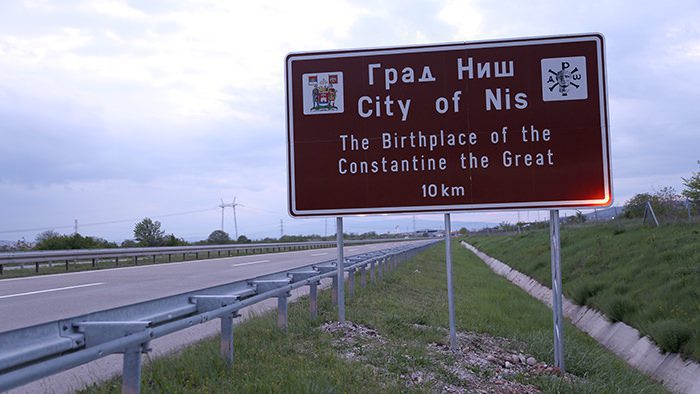
Nis (Niš, pronounced neesh) is situated in the heart of the Balkan Peninsula and is the third-largest city in Serbia.
Most notably, Nis was the birthplace of the Roman Emperor Constantine the Great – the man credited with converting the Roman Empire to Christianity.
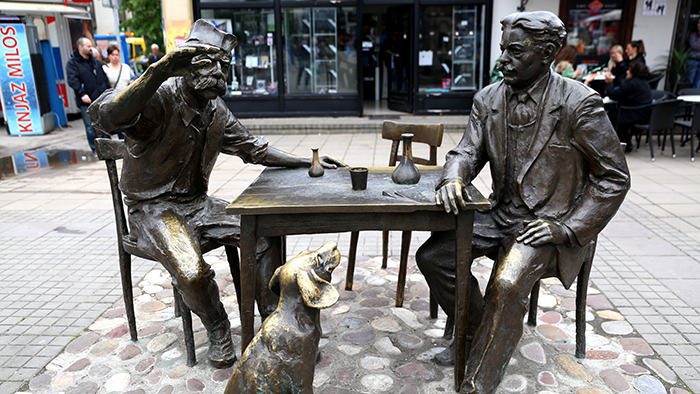
See our article: 60 Instagram Images that will make you want to visit Serbia and Bosnia now
In this travel guide to Nis you’ll quickly realize it is a city with a chaotic history spanning several centuries – much of it dark, but undeniably historically significant. Nis is a great city to learn about Serbia’s history, and is a good home base from which to see some of the country’s best ancient ruins.

You must begin in the heart of the city at the Nis Fortress. This 18th century construction is situated along the shore of the Nišava River, atop the ruins of the ancient Roman military camp, Naissus. The fortress was built during Turkish rule (1386 – 1878) as was regarded as one of the most beautiful buildings in the Balkans.
The Nis Fortress was used as an armory, hammam (bath), and prison. Much of the original building is still standing. It is a free attraction where people are welcome to stroll the paths and check out the remaining constructions within. Inside there are restaurants, ice cream vendors, and stages where the main programs of Nišville Jazz Festival are held each year in August.

The bohemian quarter of Nis is Kazandžijsko sokatče, which means “Tinkers Alley” or “Coppersmith Alley,” is situated in the old town, on what used to be a street lined with craft workshops. Today it forms a pedestrian-friendly zone of restaurants and kafanas (cafés that serve more meat then they do coffee). Several of the buildings here date bath to Turkish rule.
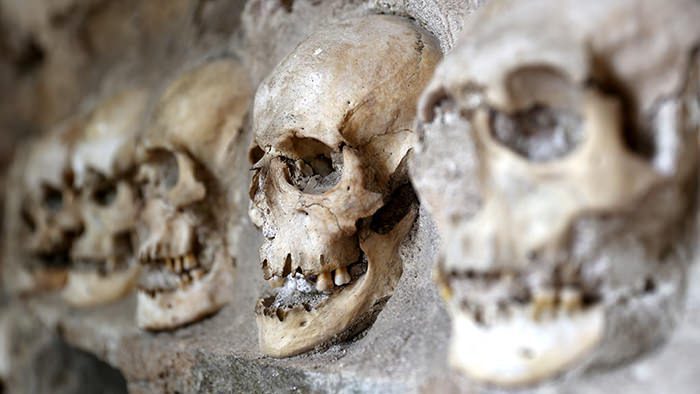
No travel guide to Nis is complete without a mention of Skull Tower (Braće Tasković bb). The first thing you should know is that the name of the tower is not a metaphor. This is actually a tower made of skulls, about 3 meters tall, which was built by the Turks on the order of Khurshid Pasha. The skulls are those of Serbs killed by Ottomans during the Battle of Čegar during the First Serbian Revolution in 1809. The original tower had 952 skulls and was placed on one of the roads leading into Nis as a warning to the Serbian people. Nowadays the tower contains only 58 skulls. You can visit the tower inside of a chapel that dates back to 1892. The chapel is closed Mondays. Admission is 120 dinars.
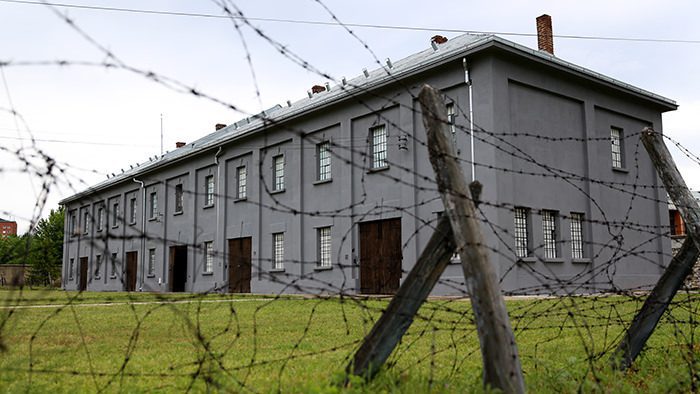
Unfortunately, Nis too was caught in the horrors of World War II, and in 1941 became home to the Nis concentration camp (12. februar bb), which the Germans nicknamed the “Red Cross Concentration Camp” for the Red Cross station nearby. A tour of the Red Cross Concentration Camp brings on sickening feelings and immense sadness – a truly horrific time in European history. Through the years the camp housed 30,000 people, of which 12,000 were executed. The concentration camp is closed Mondays.
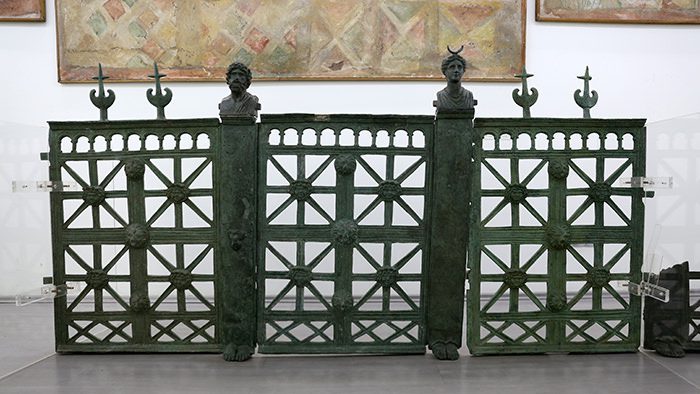
The Archaeological Hall of Nis National Museum (Nikole Pašića 59) holds a wide range of historical finds including millennia-old clay figurines, Roman era statues and currency, Medieval religious items, and a replica sculpture of Constantine the Great. The original bronze was discovered in Nis in 1900.
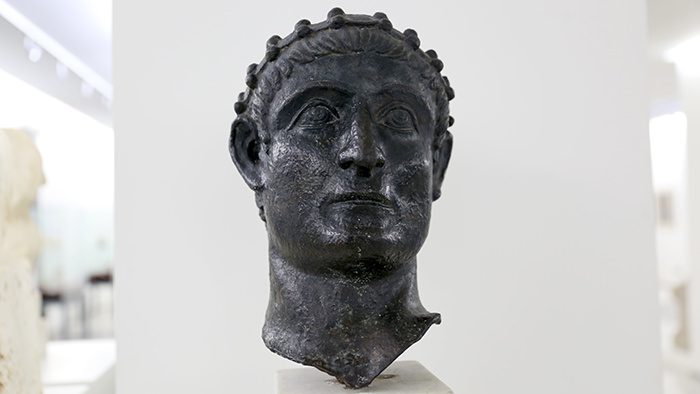
It is currently housed in the National Museum in Belgrade as part of a remarkable collection curated for the exhibition “Constantine the Great and the Edict of Milan.” The Archaeological Hall of Nis National Museum is not a large space, but there are several fascinating objects to see. The museum is closed Mondays.
See our episode on: Top Things to See and Do in Nis, Serbia
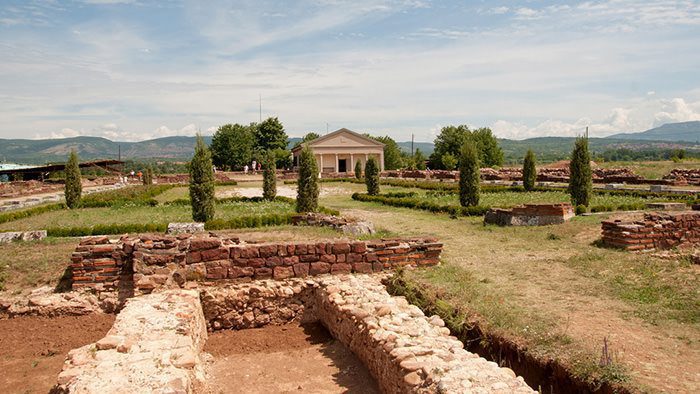
The ancient site of Mediana is the most visited day trip from Nis and is proof of the wealth and glory of the Roman city of Naissus. It is where Emperor Constantine was born and built a luxurious estate in honor of his birth city. Visitors can admire the ruins of a villa that once had beautiful mosaic floors and a heated bath complex (thermae). There is also a small archaeological museum on the premises. Mediana is located along the Nis – Sofia road, which used to be the “Via Militaris,” or Roman Military Road. Mediana is closed Mondays.
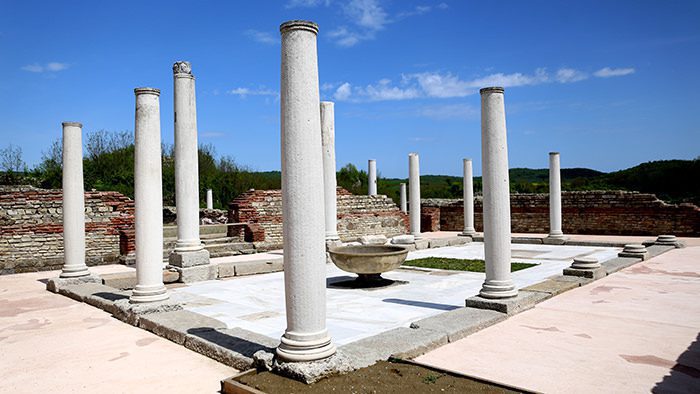
The palace of Felix Romuliana was commissioned in the late third/ early fourth century by Emperor Caius Valerius Galerius Maximianus, or Emperor Galerius for short. He built it to commemorate his retirement from the throne and named it after his mother Romula. It is a sprawling compound spread across 10 acres. You’ll be able to see the remains of the complex: walls, imperial palace, temples, monumental altar, public baths, and memorial complex, and a tetrapylon (four-walled monument that symbolizes where earthly and heavenly roads intersect). East of the palace are the mausoleums of both Emperor Galerius and his mother, which look like two round hills on the horizon – their symbolic elevation to the status of gods. Felix Romuliana is a UNESCO World Heritage Site.
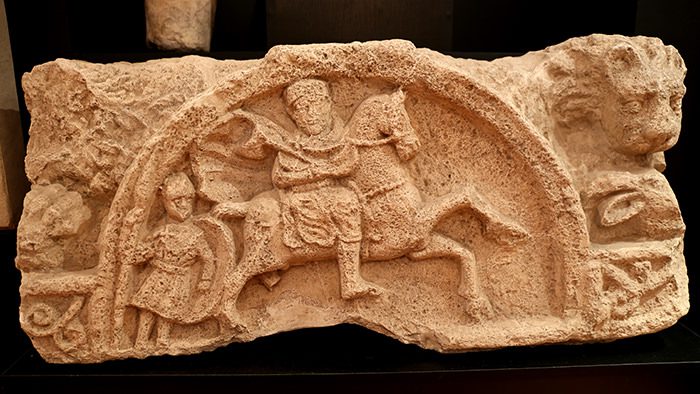
To see the impressive objects excavated from Felix Romuliana, and a chance to understand the palace complex, a visit to the National Museum of Zaječar is a must. The town is just a 15-minute drive from the site of Felix Romuliana and holds an impressive collection of mosaics, statues including a bust of Emperor Galerius, Roman coins, and aerial photography of the site. If you’re in Zaječar and feeling hungry, head to Vodenica (Windmill) Restaurant in the center of town, about two blocks behind the museum.
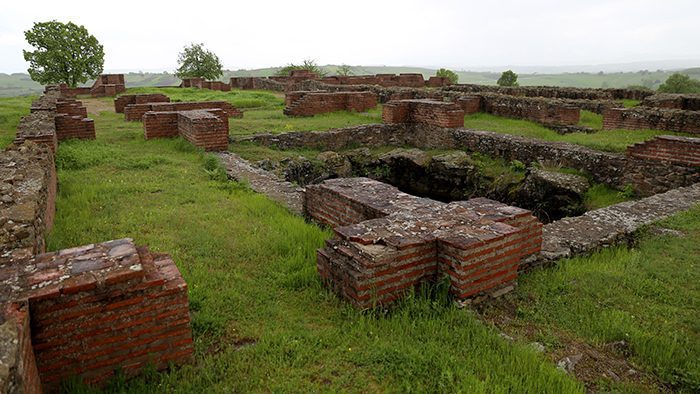
If you are craving more history and amazing barbecue, take a day trip to Leskovac, a town about an hour’s drive south of Nis. Most people stop in Leskovac on their way to admire the Byzantine ruins of the Justiniana Prima (Empress’ Town) archaeological site. Located about 29 km west of Leskovac, nestled among lush scenery, Justiniana Prima was an early Christian city founded by Emperor Justinian I. It served as the seat of the Archbishop from 535 to 615. The site contains what is left of an enormous basilica, the acropolis, lower town, and upper town. Walking around Justiniana Prima will reveal city walls, gates, churches, and large bath complex with hypocaust system (heated floors). Justiniana Prima served as the administrative and spiritual center of Illyricum, a Roman province that encompassed the central Balkan Peninsula.
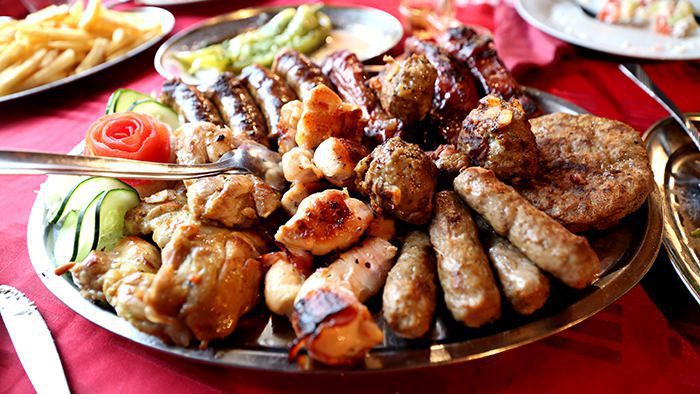
When in Leskovac you shouldn’t pass up the opportunity to try their famous barbecue. The town has hosted an annual grilled meat festival since 1989, but you can try the local cuisine anytime of year. Specialties include sausage, grilled pork, lamb, and flat bread. Ask locals to recommend you a great barbecue restaurant and point you in the right direction. You can’t go wrong!
Tip: Leskovac can be a challenge to navigate unless you enlist the help of a local guide. Contact Mr. Nebojsa Dimitrizevic (andonikle@yahoo.com) to take you around for the day. He works for the local tourism office and will give you a fair rate, plus recommend an amazing place to eat like he did for us.

Knjaževac is another day trip option from Nis, especially for wine lovers. Every May Knjaževac hosts its annual wine festival, which also showcases local smoked cheeses and ham. We had the privilege of a wonderful wine tasting at the award-winning Jovic Winery, and although they cannot accommodate large groups, the wine is superb and affordable – we left with no less than 3 bottles for family members back home. The owner does not speak English, so it would be best to arrange a visit with someone who speaks Serbian. Taking a stroll in Knjaževac will reveal beautiful bridges crossing the Timok River. Other places of interest include the Town Museum located in the former home of the Timok rebellion, Aca Stanojevic, and two famous spa complexes, the Rgoska Banja and Bazen Banjica.
Check out our episode on A Day Trip to Knjazevac’s Jovic Winery
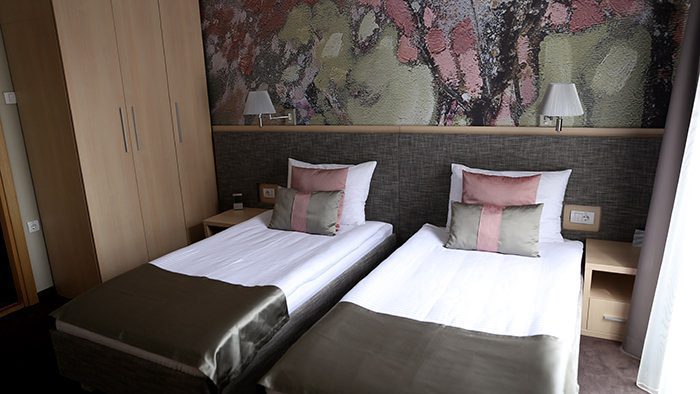
There are several hotels in Nis. We had a very positive experience staying at the Art Loft Hotel, which situated in the heart of Nis. Tucked away on a quiet street in a renovated 1930s mansion, the Art Loft Hotel isn’t very large, but has all the modern amenities you’ll need during your stay. Only a couple minutes from the city’s pedestrian zone and a five-minute walk from the Nis Fortress, this nine-room boutique hotel is unlike any other hotel in the city. Not only does the hotel showcase works from upcoming local Nis artists, but each of its rooms was individually designed and inspired under a local artists instruction.
Check out our episode on The Best Hotel Choice in Nis, Serbia: Art Loft Hotel
Check out our article: Best Modern Restaurants in Belgrade
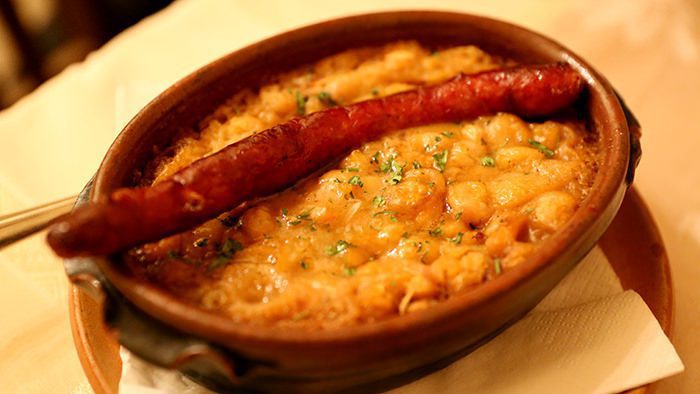
Hamam (Tvrđava bb) is a favorite among locals and tourists alike. The restaurant is located within the original Turkish bathhouse inside the Nis fortress, not too far from the main entrance. The specialty of the house is grilled meat, of which the lamb is the best. If the weather is wet or rainy, step inside and back in time as you sit beneath the domed ceilings of this once-active bathhouse. The Arabic scroll on the walls and marble floors have long since been removed, but the dim lighting and live Balkan folk music will make this a memorable dining experience.
Check out our episode on Hamam Restaurant
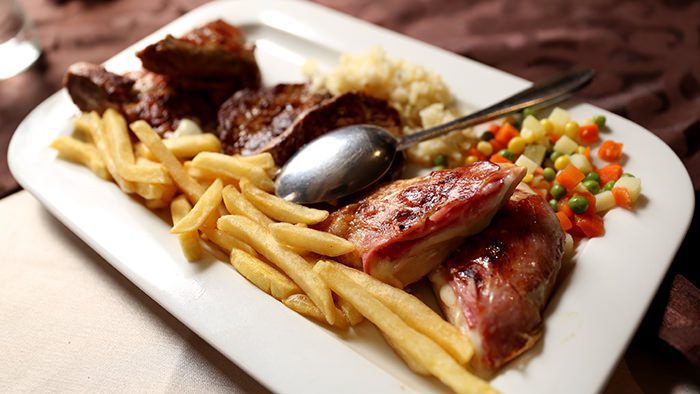
Stara Srbija (Trg Republike 12) Literally ‘Old Serbia’, this is the biggest traditional restaurant in Nis. You will have to make reservations, especially for dinner since everybody wants to come and enjoy the live folk music every night. Like everywhere in Serbia, portions are hefty and the meat is always the specialty. The restaurant is centrally located and has both outdoor and indoor seating.
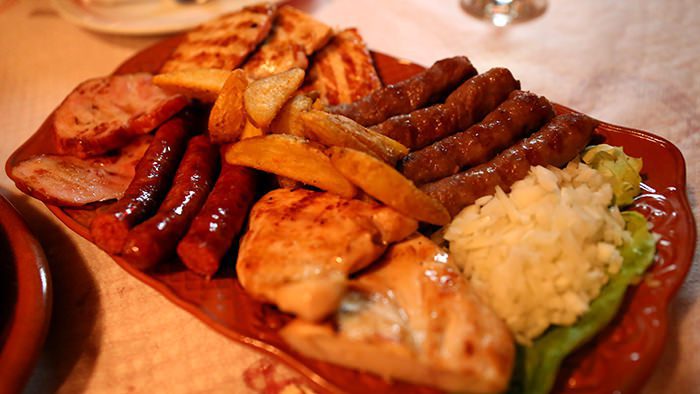
Kafana Galija (Nicole Pašića 35) is a nautically themed restaurant (a little odd since the country is landlocked), but nevertheless has some of the best čevapčići in town. Kafana Galija is popular on weekend afternoons and has a good selection of wines and rakijas.

Kafana Nišlijska Mehana (Prvomajska 49) is an etno (folk) restaurant along the Nišava River that served up traditional foods and lots of rakija. Great selection of soups, salads, grilled meat platters, and Serbian desserts. Fridays and Saturdays there is live music and the place fills up, so reservations are a must! Cozy atmosphere and delicious food, about a 10-15 minute walk from Nis Fortress.
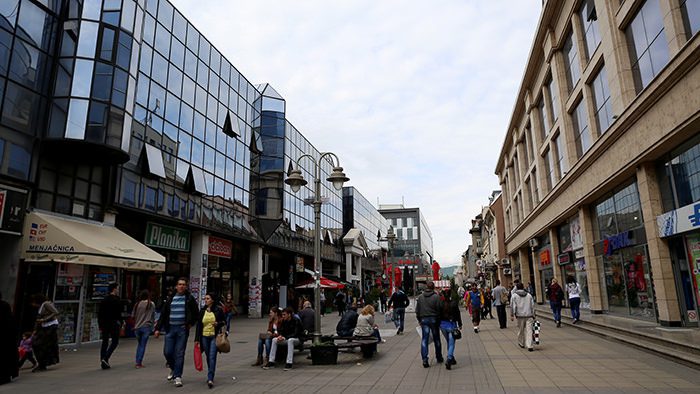
Time zone: Central European Time (UTC +1)
Electricity: 220-240 Volts. Electrical sockets take the European 2-pin round plug. For 110-120 V (U.S. and Canada) appliances, a plug adapter, and in some cases a voltage converter is required.
Currency: Serbian dinar (RSD)
Language: Serbian
Watch our Serbian Language Tutorial
Best time to go: May through October
Airport: Belgrade Nikola Tesla Airport (BEG)
Tipping: A service charge is automatically added to restaurant bills. Tipping 5 – 10% of the total bill is customary at bars and restaurants, and is always appreciated.
Getting around: The best way to get around Serbia is by driving. Many people warned us about potholes and badly maintained roads, but we didn’t experience any problems at all. But you do have to watch out for farm vehicles and sometimes cattle on the highways. Carrentals.co.uk helped make the rental process easy and they gave us a reliable car. Remember to have cash on hand for the tollbooths as you cross from one part of the country to another. Hitchhiking is common in Serbia, but we advise against this as a form of travel through Serbia.
Visas: Citizens of the following countries do not need a visa to enter Serbia and can stay for up to 90 days:
Albania, Andorra, Argentina, Australia, Austria, Belgium, Belarus, Bolivia, Bosnia and Herzegovina, Bulgaria, Canada, Chile, Croatia, Costa Rica, Cuba, Cyprus, Czech Republic, Denmark, Estonia, Finland, France, Germany, Great Britain, Greece, Hungary, Iceland, Ireland, Israel, Italy, Japan, Latvia, Lichtenstein, Lithuania, Luxembourg, Macedonia, Malta, Monaco, Netherlands, Norway, New Zealand, Poland, Portugal, Republic of Korea, Romania, San Marino, the Seychelles, Singapore, Slovakia, Slovenia, Spain, Switzerland, Sweden, Tunisia, United States of America, Vatican City.
Before you go: Serbia still allows cigarette smoking inside restaurants and bars, but not in offices and public areas such as theaters, cinemas or concert halls. If you are sensitive to smoke, ask to be seated outside at restaurants.
Have you ever been to Nis, or planning a trip to Serbia? Tell us about it! Leave a comment below.
Special thanks to Serbia Travel, XShot, and Carrentals.co.uk!
Sergio says:
Good morning, David.
I intend to go to Serbia in may/june (may is a little colder, but june is more rainy, so…it’s hard to decide).
I am thinking arrive in Belgrade, rent a car at airport, stay in the city for 2 days (resting…), go to Romania (Timișoara – Sibiu – Sighișoara – Brașov – Bucarest), then Bulgary (Veliko Tărnovo – Plovdiv – Sapareva Banya – Sofia) and reenter Serbia by southeast (Niš – Nova Varoš – Zlatibor – Belgrade+2 nights).
Ten days each country, democratically.
Do you have any suggestions on other interesting places / cities to visit in some of these countries?
I have some freedom to stay there a little more if “necessary”.
Thanks in advance.
krista says:
Hey! great post! i wish i could spent loads of time exploring this city! i am curious to know do you think it would be possible to spend just a day in Nis. I am going to Sofia for four days and want to spend one day in Nis if I can. Many thanks 😀
David says:
Yes it is definitely possible. Its a 3 hour drive with a border crossing, so I would suggest leaving really early 7am from Sofia. Get their around 10am, explore the city, have lunch more sites then head back. It will be a long day but definitely worth it.